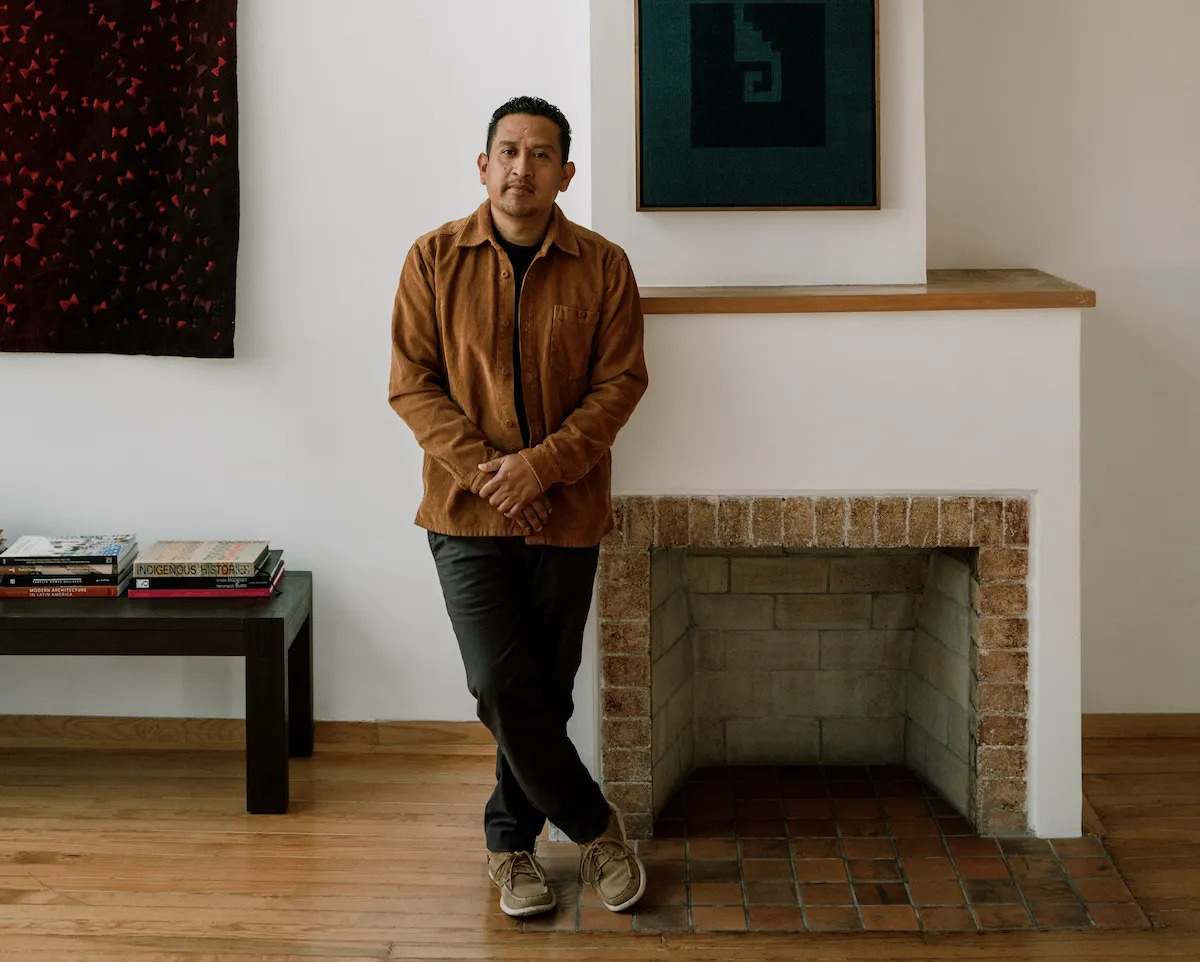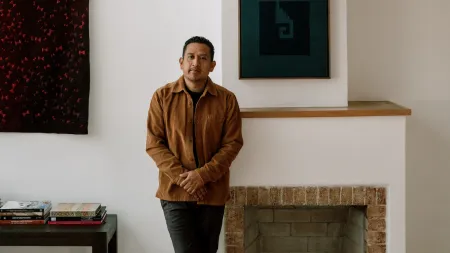
In 1940, famed Mexico City architects Luis Barragán and Max Cetto collaborated on a building called Edificio para Artistas. Still considered a beacon of Mexico City modernism, the building was imagined as four live workspaces with floor-to-ceiling windows and floating spiral staircases designed for artists by artists as a place to create and exchange ideas.
Today, the building remains a creative hub with tenants like architects, interior designers, and photographers. Last Wednesday, during the Zona Maco art fair, visitors were invited to the inaugural exhibition hosted by the building’s newest tenant, Veronica Fernandez, who opened the agency PARA A as an extension of her art advisory services to help Latin American artists garner US representation. The show, titled “Desde Otra Mirada,” runs through March 17 and showcases the work of Zapotec textile artist Porfirio Gutiérrez, who migrated to California from Teotitlán del Valle in Oaxaca, Mexico, where his family have been weaving for generations.
This is the first time that Gutiérrez, whose work reinterprets traditional textile techniques and motifs through a contemporary lens, will exhibit in his native Mexico. Gutiérrez has been recognized by organizations like the Smithsonian and Harvard University for his Traditional Ecological Knowledge, particularly for his expertise in preserving natural dying techniques used by the Zapotec for centuries as both a spiritual and artistic practice.
Currently, he has a show at the Chinati Foundation in Marfa, Texas. Next year he will exhibit at several Los Angeles institutions including the Los Angeles County Museum of Art and the Museum of Contemporary Art Santa Barbara as part of the Getty Foundation Pacific Standard Time initiative, which this time features an array of science-themed shows. But his recent show at Black Mountain College Museum + Art Center aligns him with Anni and Josef Albers, the modernist artist couple who left the Bauhaus for Black Mountain College and spent time in the Edificio para Artistas, in the very same apartment which once belonged to their friend Clara Porset.
Porset, a Cuban émigré and an interior and furniture designer who married Mexican muralist Xavier Guerrero, often collaborated with Barragán. In 1952, she curated a seminal show in Mexico City at the Palacio de Belles Artes showcasing Mexico’s influence on modernism through furniture, art, everyday objects, and Indigenous craft. The Alberses traveled to Mexico often, visiting the archaeological site Mitla, the religious, ancestral capital of the Zapotec, known for its complex, geometric mosaic fretwork. The motifs that can be seen there in Anni’s textiles, which incorporate Indigenous weaving techniques, and in Josef’s photographs.

Gutiérrez’s ancestral connection to Mitla is an integral part of his work, as is the California modernist architecture that surrounds him. “I’m Mexican, but I didn’t learn about these modern traditions until I moved out of my own country,” he said. “Now I’m able to view these ancestral and modern traditions as a kind of contemplative practice. I find myself between these two worlds, coming from an Indigenous tradition, yet being exposed to modernism naturally influences the way I see things and how I engage with this information as an Indigenous artist.”
Gutiérrez’s framed textiles, with their graphic blocks of color, showcase his Indigenous knowledge with their exquisite natural dyes in tones like red, brown, blue, and yellow derived from nature—cochineal insects, black walnut, indigo, and marigold. These pieces may place the traditional motifs lifted from Mitla in a fresh context, but they contain the same meditative quality and restraint as the original forms upon which they’re based. The work also intentionally reminds the viewer that it would not exist without the gifts of nature and the seasonal cycles.
Frederick Janka, cofounder of Santa Barbara-based JC Connelly, a nomadic curatorial project that partnered with Fernandez for the Gutiérrez show, said, “What we often don’t get in Western art history is the influence of Indigenous culture across the Americas on modern art. With this show, we can see how the modernists here in Mexico were influenced by Porfirio’s ancestors. This show is a way to tell that story and center the maker.”
Petrit Halilaj Dreams Big for a Radically Different Mexico Museum Show
Mexico City’s Material Fair, Known for Its Line-Up of Cutting Edge Galleries, Celebrates 10 Years

Four Seasons Brings Sustainable Luxury to the Dominican Republic

Khloe Kardashian Embraces Biker Trends in Balenciaga and Kim Kardashian Channels Cowboy Core Fashion at Fanatics Super Bowl Party 2024

Apple just gave us a big hint that AI is taking over more than just the iPhone

A Legal Scouting Report for What’s Next in Dartmouth Basketball


